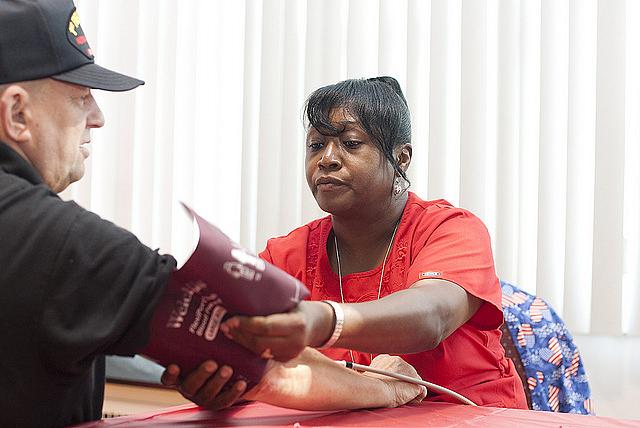A Public Death: Hypertension’s toll tracked through death certificates

Let’s think of risk factors for early death as a high school prom. Hypertension is a bit of a wallflower.
It’s not the group of aloof, slightly menacing kids smoking just out of the view of the chaperones.
It’s not the heavyset kids who seem to get heavier every year.
And it’s not the kids showing up smelling of a mix of peppermint schnapps and shoe polish.
Yet hypertension – or high blood pressure – kills more people every year than smoking, obesity, and alcohol. And, according to a new study by CDC researchers, it’s getting worse. What did researchers use to bring high blood pressure out of the shadows?
Death certificates.
Hsiang-Ching Kung and Dr. Jiaquan Xu from the CDC's National Center for Health Statistics reviewed death certificate data from 2000 to 2013 for adults ages 45 and up. They looked at what was listed as the first, second, and third contributing cause of death, including all the causes typically connected to high blood pressure, such as ischemic heart disease, stroke, cancer, and diabetes. And they used statistical models to adjust the deaths for age and to develop trends over time for the findings.
They found that the age-adjusted death rate from causes related to high blood pressure grew by 23 percent from 2000 to 2013. How did all other causes of death trend? They decreased 21 percent, according to the study.
They found, too, that older women are more likely to die from high blood pressure than men. The gap varies over the years, but in 2005, women 85 and older died from hypertension at a rate of 2,464 per 100,000 people while men died at a rate of 2,110 per 100,000.
And they found that while deaths from high blood pressure are higher among non-Hispanic blacks than non-Hispanic whites, the rates are decreasing among blacks and increasing among whites and Hispanics. The death rate from high blood pressure among non-Hispanic blacks fell from 559 per 100,000 in 2005 to 510 in 2013, a 9 percent drop. For the Hispanic population, by comparison, rates went up over the same period by 8 percent to 285 per 100,000.
The study did not receive a lot of coverage, but I was particularly heartened – pun intended – by Crystal Phend’s story in MedPage Today. She did a terrific job explaining the findings, and called out the data source right in the lead:
“Hypertension is increasingly contributing to U.S. mortality, a national death-certificate study showed.”
I had not seen that term used in a news story, so I did a little checking. The phrase “death-certificate study” showed up a lot on scientific papers from the 1970s through the 1990s, but it has fallen out of favor. News stories almost never use it. This is largely, I suspect, because most studies use more than just death certificates in their analysis.
But if death records are the primary source for a study, reporters should spell that out for two main reasons. First, analyzing records from the past can generate different results from following people over time and measuring them against a control group. Second, it’s important to let people know the value of collecting accurate death records and making them available for research, journalism and public health initiatives.
Photo by Fort George G. Meade PA Office via Flickr.
